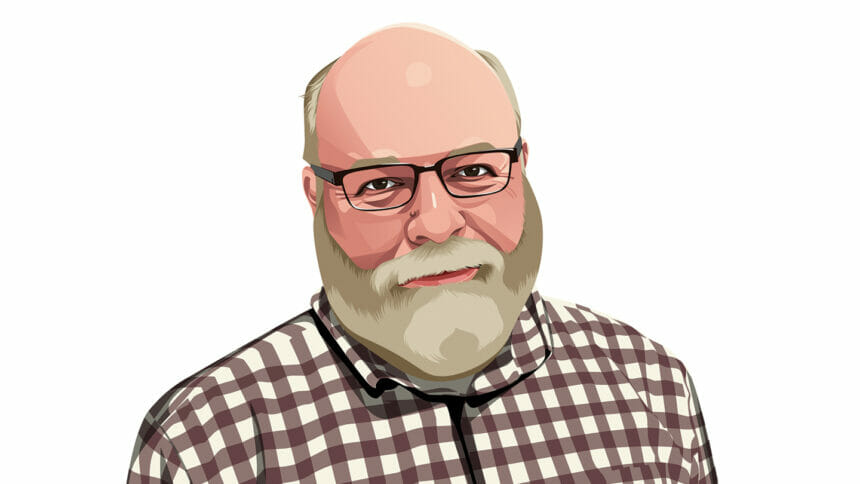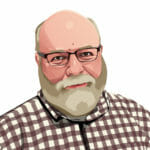
My first reaction was paralyzing shock, followed by bewildering bafflement, quickly replaced with intense feelings of personal revulsion.
I must have stumbled across something truly horrible, right? Not really. Just an old picture of me wearing my CPAP sleep apnea headgear while holding my accordion — the two accessories most guaranteed in life to ensure social and spousal isolation.
Why would any sane or sober person (I probably was neither) allow a moment like that to be captured for all eternity? I have no idea — it was at least 20 years ago, and the circumstances defy memory and explanation. Sometimes in this space, I’ve been known to share a personal photo, the better to illustrate what I’m trying to say.
This will not be one of those times.
But as I continue to gaze at that image in humiliation and shame, at least there’s one positive takeaway: I was trying to learn a musical instrument, which recent research reported by McKnight’s shows can improve memory and executive function in older adults.
Though their motives were probably more about keeping me out of trouble than ensuring brain health, my parents encouraged musical pursuits, and I played clarinet in the grade-school band my dad directed. Eventually deciding that instrument wasn’t cool enough to impress girls, I switched to trumpet. But by high school, that choice seemed passe and conformist, so I swapped it out for a non-traditional option — the E♭ horn. That lasted only until college, when the band director said it wasn’t a real instrument and wouldn’t let me join.
Decades after abandoning those fruitless pursuits, why I chose to take up the accordion is an enduring mystery. It’s incredibly difficult to learn, and in an article at the time for another long-term care magazine, I described the challenges this way: “It was like trying to simultaneously send Morse code with one hand and knit a cardigan with the other, all while holding a 20-pound badger on my lap.”
Sadly, I don’t play it much anymore. My teacher, a classically-trained accordion virtuoso, passed away some years back, and now I live in an apartment. Were I to take up the instrument again, my neighbors would undoubtedly file an auditory restraining order.
Encouraging nursing home residents to revisit their own latent musical inclinations might create a similar problem, but I’m convinced it could be a worthwhile addition to the activity program.
Up until shortly before his death at 86, my father still played trombone in a church group, and it brought him much joy, even though he wasn’t very good at it. I’m certain his passion is shared by many seniors in our facilities, and facilitating this long-lost interest could yield many benefits in health and mood.
Imagine the cacophony of walking the facility halls and hearing a trumpet blast, a violin trill, a drum riff, an opera aria or even a kazoo. Some might run from the building with their hands over their ears. But along with Neil Diamond, I’d call it a beautiful noise.
Things I Think is written by Gary Tetz, a two-time national Silver Medalist and three-time regional Gold and Silver Medal winner in the Association of Business Press Editors (ASBPE) awards program, as well as an Award of Excellence honoree in the APEX Awards. He’s been amusing, inspiring, informing and sometimes befuddling long-term care readers since the end of a previous century. He is a writer and video producer for Consonus Healthcare in Portland, OR.
The opinions expressed in McKnight’s Long-Term Care News guest submissions are the author’s and are not necessarily those of McKnight’s Long-Term Care News or its editors.
Have a column idea? See our submission guidelines here.




